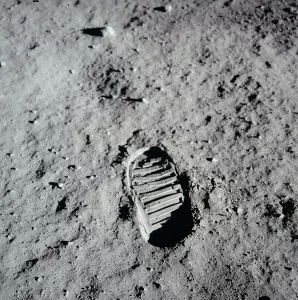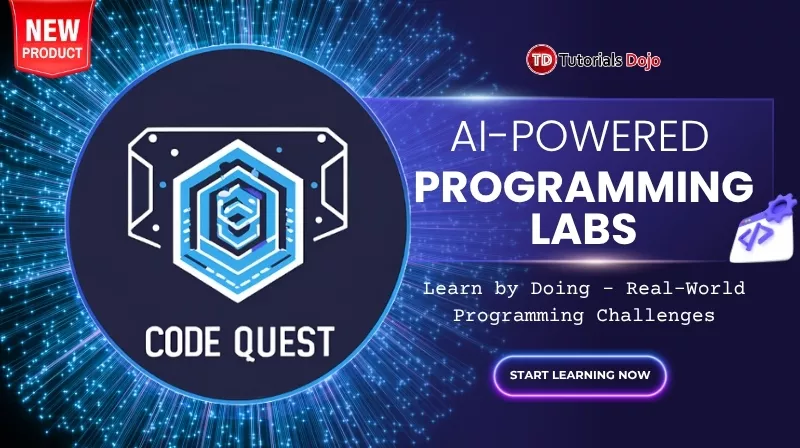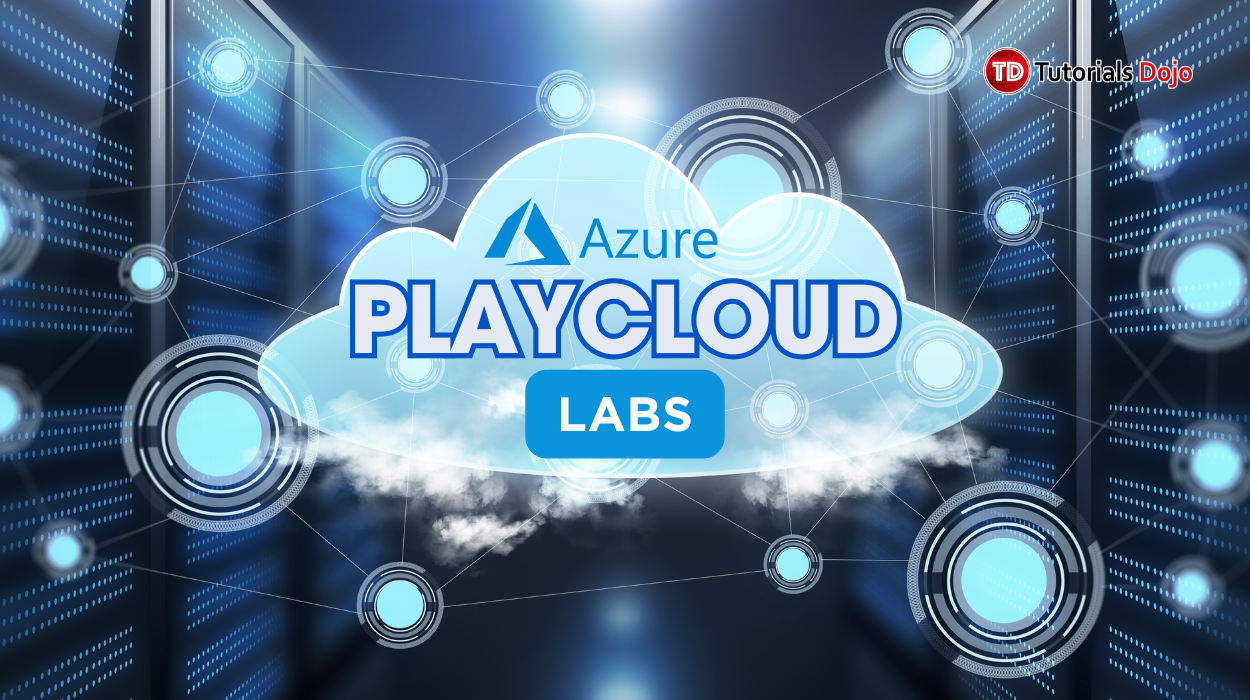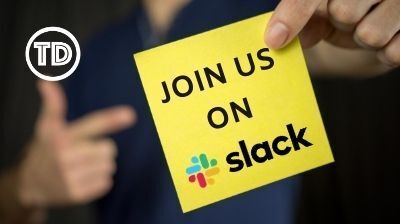Last updated on August 29, 2025
“One small step for man, one giant leap for mankind”

– a phrase spoken by Neil Armstrong as he became the first person to set foot on the Moon
In 1962, when President Kennedy declared that America would put a man on the moon before the decade’s end, he wasn’t just announcing a scientific endeavor. He was firing the starting gun in a race that would reshape the global economy for generations to come, its effect is still here as of 2025! The Space Race between the United States and Soviet Union was NOT merely about footprints in lunar dust, it was a high-stakes competition for technological superiority, economic dominance, and global influence.
![The New Race to the Moon: AI’s Global Economic Impact and What It Means for Your Career [Opinion]](https://td-mainsite-cdn.tutorialsdojo.com/wp-content/uploads/2025/04/VonBraunMuellerReesSA6-300x239.webp)
DR. VON BRAUN-W AND DR. REES AT FIRING ROOM DURING SA-6 LAUNCH, MAY 28, 1964
Today, we stand at the threshold of a new race with even greater implications: the global competition to dominate artificial intelligence. Like the Space Race before it, this competition will determine not just technological leadership but economic prosperity for decades ahead. And just as the original race to the moon transformed industries and created entirely new career paths, the AI revolution is already reshaping what work looks like across every sector of the economy. So much for “History repeats itself” right?
If the race to the moon was about technological prowess and economic opportunities, what does the race to dominate AI mean for today’s global economy and your career prospects in this timeline?
The Cold War and the Space Race: An Economic Perspective – Historical Context
The Space Race emerged from the ashes and bloodbath of World War II, when global economies were struggling to rebuild and redefine themselves. At the time, economies were fragile, job markets were unstable, and a nation’s technological prowess became a critical factor in its economic future. Whoever succeeded in this race would secure not only geopolitical influence but also the opportunity to shape global markets and attract critical investments for economic growth. Both the United States and Soviet Union recognized that technological leadership would translate directly into economic advantage in the new global order. The ability to launch satellites and eventually humans into space wasn’t just about bragging rights, it was a global trend which economic system could mobilize resources more effectively and drive innovation, hence the Race to the Moon.
![The New Race to the Moon: AI’s Global Economic Impact and What It Means for Your Career [Opinion]](data:image/svg+xml,%3Csvg%20xmlns='http://www.w3.org/2000/svg'%20viewBox='0%200%20300%20169'%3E%3C/svg%3E) Technological Showdown (Which country will have the bragging rights?)
Technological Showdown (Which country will have the bragging rights?)
Do you know the feeling when we you are competing in a hackathon with different universities? Whichever team who will win the competition mostly like who will have internship offers, job opportunities, or even sponsorship investment because of the team’s proven skills and product they worked on during the development phase of the Hackathon. This is the same gist why there’s a Race to the Moon.
When the Soviet Union strikes its first punch to the West, the U.S, launching Sputnik in space in 1957, it sent shockwaves and extreme pressure throughout the American economic and political establishment. The race that followed wasn’t just about reaching space; it was about demonstrating technological capabilities that would attract global investment and allegiance, remember during these years, World War II has just finished, establishing more alliance globally means more trades, partnerships, and “win-win” negotiations between countries to countries to pull themselves out from the post-war effects.
Countries and corporations worldwide were watching to see which superpower could deliver on the seemingly impossible, with plans to align their economic futures accordingly.
Economic Impact
![The New Race to the Moon: AI’s Global Economic Impact and What It Means for Your Career [Opinion]](https://td-mainsite-cdn.tutorialsdojo.com/wp-content/uploads/2025/04/Kennedy_Giving_Historic_Speech_to_Congress_-_GPN-2000-001658-300x228.webp)
By NASA – Great Images in NASA Description, Public Domain, https://commons.wikimedia.org/w/index.php?curid=6452829
The economic ripple effects of the Space Race were profound and far-reaching. NASA’s Apollo program alone employed 400,000 Americans and involved contracts with 20,000 companies. But the true economic impact went far beyond direct employment:
- Technology Transfer: Innovations in computing, materials science, and telecommunications developed for space exploration transformed countless industries.
- Education Revolution: The emphasis on STEM education created generations of engineers and scientists who drove economic growth well beyond aerospace.
- New Industries: Entirely new sectors emerged from space technologies, from satellite communications to advanced manufacturing techniques.
The New Race: AI as the Frontier of Today’s Economy
Global AI Race
Today’s race for AI dominance mirrors the Space Race in its geopolitical significance. The United States, China, and the European Union are investing billions in AI research and development, recognizing that leadership in this domain will determine economic supremacy in the 21st century.
Just as nations once competed to plant their flags on the moon, they now compete to establish leadership in machine learning, natural language processing, and autonomous systems. The stakes? Control over the technological architecture that will power virtually every aspect of tomorrow’s economy.
Technology as Economic Driver
AI isn’t just another technological innovation—it’s a foundational technology that’s transforming how value is created across the entire economy:
- Productivity Enhancement: AI is driving unprecedented gains in productivity across industries, from manufacturing to services.
- Industry Transformation: Sectors from healthcare to finance to transportation are being fundamentally reshaped by AI capabilities.
- Economic Growth Engine: Countries leading in AI development are projected to see GDP growth accelerated by as much as 1.5% annually.
Investor Interest (Who will win the superpower hackathon?)
The global investment community has recognized AI’s transformative potential, with venture capital flooding into AI startups at record levels. In 2023 alone, AI startups attracted over $70 billion in global investment—a clear signal that investors see AI as the next great economic frontier, much as aerospace was viewed in the 1960s.
Remember when Deep Seek gutted ChatGPT’s Market Value?
![The New Race to the Moon: AI’s Global Economic Impact and What It Means for Your Career [Opinion]](https://td-mainsite-cdn.tutorialsdojo.com/wp-content/uploads/2025/04/b869fe83-fa78-4f4c-ac88-365e4247deb9_1040x590-300x170.webp)
When Deep Seek—a nimble, open-source AI model developed by a decentralized collective of researchers, surpassed GPT in benchmark performance and domain-specific accuracy, the market reacted like a thunderclap. OpenAI’s valuation, once seen as untouchable, faced a staggering $18 billion drop in just three weeks.
Why? Because Deep Seek did more than outperform, it redefined the rules of the AI race:
-
Open-source advantage: Deep Seek’s transparency and community-driven development resonated with enterprises wary of black-box models and licensing lock-ins.
-
Customization at scale: Its modular architecture allowed for rapid fine-tuning across verticals—finance, legal, biotech—where ChatGPT lagged in domain adaptation.
-
Cost-efficiency: Running Deep Seek on local infrastructure slashed operating costs by up to 60%, a game-changer for startups and governments alike.
What followed was a mass migration: developers, data scientists, and even Fortune 500 firms pivoted their AI strategies overnight. Suddenly, being first wasn’t enough, being adaptable, affordable, and open became the new currency of AI dominance.
The Deep Seek episode exposed the volatility of the AI sector, but it also highlighted a deeper truth: in this new economic frontier, disruption isn’t a bug, it’s the system. The AI landscape can shift with a single innovation, a better model, or a more ethical framework.
And just like that, the crowned king became a case study.
How AI is Reshaping the Global Job Market
Let’s talk about the “market” for a second. When we say job market, we’re not just talking about companies posting on LinkedIn or recruiters sending emails. We’re talking about supply and demand for human skill. We’re talking about what the world values, where capital flows, and how careers rise or fall based on shifting technological tides.
And AI? It’s not just another tide. It’s a tsunami.
“AI features” Everywhere!!
Have you noticed how suddenly every startup or Fortune 500 company is slapping “AI-powered” on their product roadmap? That’s not just a trend—it’s a signal. A signal that the entire economic architecture of work is being rewritten in real time.
This pattern isn’t without precedent. 10 years ago, the market buzzword was “cloud.” Every company was rushing to rebrand their products and features as “cloud-enabled” or “cloud-native.” This wasn’t just marketing; it reflected a fundamental shift in how computing resources were deployed and accessed. The result? A massive surge in demand for cloud engineers, DevOps specialists, and cloud architects in the IT sector.
![The New Race to the Moon: AI’s Global Economic Impact and What It Means for Your Career [Opinion]](https://td-mainsite-cdn.tutorialsdojo.com/wp-content/uploads/2025/04/Screenshot-2025-04-06-164122-300x160.png)
This isn’t mere marketing hype. Companies are fundamentally restructuring their operations around AI capabilities. What began as experimental features is rapidly becoming core infrastructure. From healthcare diagnostic tools to financial risk assessment algorithms, AI isn’t just enhancing existing systems—it’s becoming the foundation upon which new business models are built.
The velocity of this change is unprecedented. Technologies that once took decades to reach mass adoption are now scaling globally in months. This acceleration means professionals must adapt not just to a new technology, but to a new pace of technological evolution.
Job Creation and Job Destruction

By Flickr user Dick Thomas Johnson (Dick Johnson) – https://www.flickr.com/photos/31029865@N06/6554188007/, CC BY 2.0, https://commons.wikimedia.org/w/index.php?curid=18130998
Like the space program before it, AI is simultaneously creating and eliminating jobs. While some media headlines often focus on job displacement, the reality is more nuanced:
- Job Displacement: Routine and predictable tasks across many sectors are being automated.
- Job Creation: New roles are emerging in AI development, implementation, oversight, and ethics.
- Job Transformation: Existing roles are evolving to incorporate AI collaboration rather than being wholly replaced.
The key insight isn’t which specific jobs will disappear—it’s understanding how the fundamental nature of work is changing across nearly every industry. We’re not just swapping some jobs for others; we’re redefining what constitutes valuable human contribution in an AI-enabled world.
Emerging Career Paths
The AI revolution is creating entirely new career trajectories:
- AI Specialists: From machine learning engineers to natural language processing experts
- AI Implementers: Those who help organizations integrate AI into existing workflows
- AI Ethicists: Professionals ensuring AI deployment aligns with human values and legal requirements
- AI-Human Collaboration Specialists: Experts in optimizing the partnership between human workers and AI systems
These new roles represent just the first wave. As AI capabilities expand, we can expect entirely new professional categories to emerge many of which we cannot yet imagine, just as few could have predicted “social media manager” or “app developer” decades ago.
Economic Shift
The economic geography is shifting in response to AI, with talent and capital clustering in regions that foster AI innovation. Just as the Space Race created economic hubs in places like Houston and Huntsville, the AI race is reshaping economic opportunities in regions with strong AI ecosystems.
This clustering effect means that the geography of opportunity is being redrawn. Professionals may increasingly find that proximity to AI innovation hubs provides career advantages, though remote work is simultaneously democratizing access to some of these opportunities.
What This Means for Your Career
In today’s rapidly evolving technological landscape, artificial intelligence is reshaping the professional world in ways we’re only beginning to understand. Here’s what you need to know about navigating your career in the age of AI.
AI Literacy: The New Essential Skill
Regardless of your industry or role, basic AI literacy is becoming as fundamental as computer literacy was a generation ago. Understanding AI capabilities, limitations, and applications isn’t just for technical specialists—it’s becoming essential knowledge for professionals in every field:
- Healthcare professionals need to understand AI diagnostic tools
- Legal professionals must grasp AI’s implications for intellectual property, liability, and compliance
- Financial advisors are incorporating AI-driven market analysis into their work
- Marketing professionals are leveraging AI for customer insights and personalization
![The New Race to the Moon: AI’s Global Economic Impact and What It Means for Your Career [Opinion]](https://td-mainsite-cdn.tutorialsdojo.com/wp-content/uploads/2025/04/1280px-Agriculture_Plowing_CNE-v1-p58-H-300x211.webp)
By Ewing Galloway – 300 ppi scan of Collier’s New Encyclopedia, Volume 1 (1921), opposite page 58, panel H., Public Domain, https://commons.wikimedia.org/w/index.php?curid=137110
But does this mean we need to shift our careers toward AI development or engineering?
Absolutely not. Consider this historical parallel: 60 years ago, at the height of agricultural industrialization, many predicted the extinction of farming as a profession. Yet farmers are still here—though the successful ones are those who embraced agricultural technology as tools for efficiency and productivity.
Today’s successful farmer isn’t just using tractors instead of horses, in the west and first world country farmers, they’re using research-driven solutions such as GPS-guided precision agriculture, drone monitoring, and IoT soil sensors. Similarly, tomorrow’s successful professionals won’t simply be using AI tools, they’ll be strategic about how these tools transform their work and elevate their capabilities.
Adaptability: The Survival Skill
The pace of AI advancement demands unprecedented adaptability from today’s workforce:
- Continuous Learning: The half-life of professional skills is shrinking, making ongoing education essential. This doesn’t just mean keeping up with industry trends but understanding how AI is reshaping your field’s fundamentals.
- Hybrid Skill Sets: The most valuable professionals will combine domain expertise with AI fluency. You don’t need to code AI systems yourself, but you should understand their capabilities and limitations within your field.
- Complementary Skills: Uniquely human capabilities like creativity, ethical judgment, and interpersonal intelligence become more valuable as routine tasks are automated. These skills aren’t just “nice to have”—they’re becoming essential differentiators.
The Transformation Pattern
AI is following the same pattern we’ve seen with previous technological revolutions:
- Initial fear of widespread job displacement
- Transformation of existing roles rather than wholesale elimination
- Creation of entirely new job categories we couldn’t previously imagine
- Elevation of work as technology handles the routine and humans focus on higher-value activities
Agricultural technology didn’t eliminate farming jobs entirely; it changed the nature of farming work and raised the productivity bar. Similarly, AI won’t eliminate most professional roles, but it will transform how work gets done and raise expectations for productivity and value creation.
Innovation and Entrepreneurship
Just as the Space Race created opportunities for entrepreneurs to commercialize NASA technologies, the AI revolution is opening doors for innovation:
- New Markets: Entirely new markets are emerging around AI applications
- Infrastructure Opportunities: Building the systems that support AI deployment represents a massive opportunity
- Domain-Specific Solutions: Applying AI to specialized industry challenges offers entrepreneurial openings
The most promising opportunities often lie at the intersection of AI capabilities and domain expertise. Consider roles like AI application specialists who understand both the technology and a specific industry’s needs, or AI implementation consultants who help organizations adopt and adapt to AI tools.
The Path Forward
The AI revolution doesn’t demand that everyone become an AI engineer. Instead, it calls for professionals who can:
- Understand AI’s capabilities and limitations in their field
- Identify opportunities to leverage AI as a tool for enhancement rather than replacement
- Develop the complementary human skills that AI cannot replicate
- Maintain adaptability through continuous learning and experimentation
The professionals who will thrive in this new landscape aren’t those who resist change or those who abandon their expertise to chase technology trends—they’re the ones who thoughtfully integrate AI literacy with their domain knowledge to create new value in ways we’re only beginning to imagine.
AI might be the next “Titanic“, Be careful!
Look, AI is real. It’s revolutionary. But let’s not pretend it’s immune to overhype.
![The New Race to the Moon: AI’s Global Economic Impact and What It Means for Your Career [Opinion]](https://td-mainsite-cdn.tutorialsdojo.com/wp-content/uploads/2025/04/RMS_Titanic_2-300x226.webp)
Titanic leaving Belfast with two guiding tugs visible (actually there were five tugs used).
Right now, AI is both a cutting-edge technology and the trend of the decade. Everyone’s talking about it, investing in it, building with it, just like they once marveled at the Titanic, the so-called unsinkable ship. When Titanic set sail over a 100 years ago, it wasn’t truly ready. But the pressure was on. Deadlines were tight. Investors had already poured in capital. And the world was watching. They wanted to show just how far engineering had come—how advanced and untouchable the future looked.
And then came the iceberg.
The engineers believed it could survive such an impact. They were wrong—not because the iceberg was too powerful, but because the foundations of the ship weren’t built with reality in mind. The builders and engineers prioritized speed to market, prestige, and public attention over long-term resilience and safety.
![The New Race to the Moon: AI’s Global Economic Impact and What It Means for Your Career [Opinion]](https://td-mainsite-cdn.tutorialsdojo.com/wp-content/uploads/2025/04/RMS_Titanic_ready_for_launch_1911-300x226.webp)
By Robert Welch – This image is available from the United States Library of Congress’s Prints and Photographs divisionunder the digital ID cph.3a27541.This tag does not indicate the copyright status of the attached work. A normal copyright tag is still required. See Commons:Licensing., Public Domain, https://commons.wikimedia.org/w/index.php?curid=4458573
Sound familiar?
AI might be heading down a similar path. The ambition is enormous. The money is flowing. The race is global. But not every model, company, or “intelligence” system is structurally sound. Many are brittle and incompatible. Many are built on shaky data, rushed development, or flawed assumptions. Hallucinations, bias, security risks, and overpromising are today’s icebergs—lurking just beneath the surface.
History warns us: when innovation outpaces reflection, things break.
If we continue building faster than we’re thinking, if we glorify growth over governance, if we push to commercialize intelligence before we understand it—we may be designing a collapse at scale. A digital shipwreck.
This doesn’t mean we shouldn’t sail. It means we should navigate wisely. We need frameworks, not just functions. Guardrails and Guidelines, not just growth hacks. Ethics, not just efficiency.
Because the AI ship is sailing fast and when it hits something, the people who suffer won’t just be the engineers. It’ll be everyone on board.
The Race Now Isn’t a Two-Player Game Anymore: You are one of its players
The parallels between yesterday’s Space Race and today’s AI competition are striking. Both represent moments when technological capability becomes the defining factor in economic destiny. Both create winners and losers—not just among nations, but among industries, companies, and individual careers.

You don’t need a billion-dollar budget to join the frontlines. You need awareness, agility, and the will to learn and act. In today’s digital economy, your ability to engage with AI isn’t just a competitive edge, it’s becoming a baseline requirement.
The race to define the future is well underway. Whether you’re launching a product, learning to code, leading a team, or just trying to future-proof your career. You are already a participant.
The question isn’t if AI will transform your world. The question is: Will you be ready when it does?
In my humblest opinion, the economic future belongs to those who recognize this shift and position themselves accordingly as exactly as what happened 50 years ago.
See you, in my next blog!
We’re just getting started.
I’ll dive into “How Global Trade Wars Are Rewriting the IT Job Market: What You Need to Know.”
If this post got you thinking, the next one might just change the way you plan your career.
Until then—stay curious, stay ready, and remember: There may be a race, but it’s okay to learn at your own pace.


![The New Race to the Moon: AI’s Global Economic Impact and What It Means for Your Career [Opinion]](https://td-mainsite-cdn.tutorialsdojo.com/wp-content/uploads/2025/04/Screenshot-2025-04-06-050847-300x169.png) Technological Showdown (Which country will have the bragging rights?)
Technological Showdown (Which country will have the bragging rights?)![The New Race to the Moon: AI’s Global Economic Impact and What It Means for Your Career [Opinion]](https://td-mainsite-cdn.tutorialsdojo.com/wp-content/uploads/2025/04/27DEEPSEEK-EXPLAINER-1-01-hpmc-videoSixteenByNine3000-300x169.webp)

















